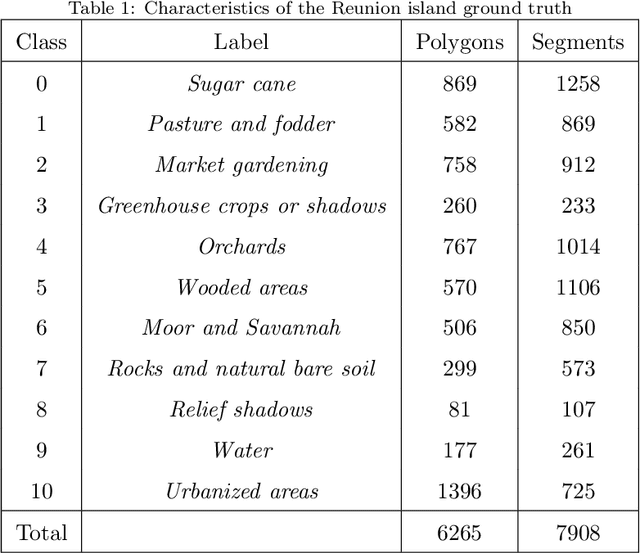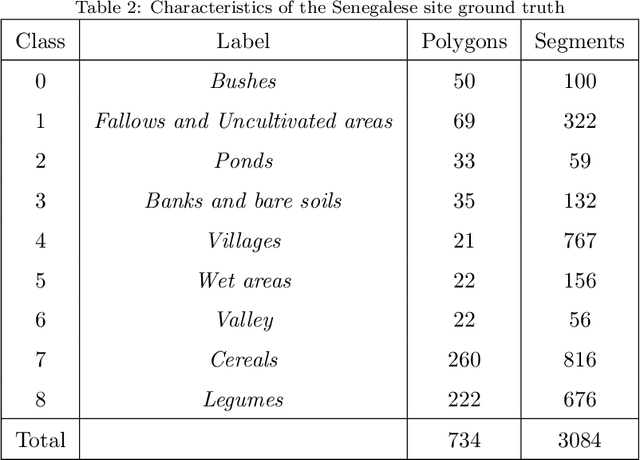Louise Leroux
Fine grained classification for multi-source land cover mapping
Apr 04, 2020



Abstract:Nowadays, there is a general agreement on the need to better characterize agricultural monitoring systems in response to the global changes. Timely and accurate land use/land cover mapping can support this vision by providing useful information at fine scale. Here, a deep learning approach is proposed to deal with multi-source land cover mapping at object level. The approach is based on an extension of Recurrent Neural Network enriched via an attention mechanism dedicated to multi-temporal data context. Moreover, a new hierarchical pretraining strategy designed to exploit specific domain knowledge available under hierarchical relationships within land cover classes is introduced. Experiments carried out on the Reunion island - a french overseas department - demonstrate the significance of the proposal compared to remote sensing standard approaches for land cover mapping.
Object-based multi-temporal and multi-source land cover mapping leveraging hierarchical class relationships
Nov 20, 2019



Abstract:European satellite missions Sentinel-1 (S1) and Sentinel-2 (S2) provide at highspatial resolution and high revisit time, respectively, radar and optical imagesthat support a wide range of Earth surface monitoring tasks such as LandUse/Land Cover mapping. A long-standing challenge in the remote sensingcommunity is about how to efficiently exploit multiple sources of information and leverage their complementary. In this particular case, get the most out ofradar and optical satellite image time series (SITS). Here, we propose to dealwith land cover mapping through a deep learning framework especially tailoredto leverage the multi-source complementarity provided by radar and opticalSITS. The proposed architecture is based on an extension of Recurrent NeuralNetwork (RNN) enriched via a customized attention mechanism capable to fitthe specificity of SITS data. In addition, we propose a new pretraining strategythat exploits domain expert knowledge to guide the model parameter initial-ization. Thorough experimental evaluations involving several machine learningcompetitors, on two contrasted study sites, have demonstrated the suitabilityof our new attention mechanism combined with the extend RNN model as wellas the benefit/limit to inject domain expert knowledge in the neural networktraining process.
 Add to Chrome
Add to Chrome Add to Firefox
Add to Firefox Add to Edge
Add to Edge